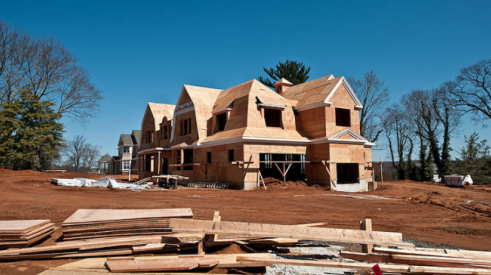Home building is hard. When times are tough (i.e., buyer’s market), we jump through multiple hoops for low/no-margin sales—that’s hard. When times are great, we retool our operations to handle large volumes of homes with leaner staffs, strained trade partner resources, and increasing cost pressures from labor and material shortages—that’s hard, too. Home building is never easy. Truth is, we should embrace hard. It’s the barrier of entry into our business that limits the number of competitors and rewards the hardest working builders, salespeople, trade partners, and land developers. Hard is good for our industry.
Now that new-home sales have nearly doubled from their 2010 low, we are facing the challenges of a recovering market. According to a survey of 25 geographically diverse home builders, the top two new hardships/concerns are:
1. Finding land/lots
2. Retraining and developing internal staff
Clearly, finding land/lots is a localized issue, so let’s look at the second hardship, which is affecting builders industrywide.
Shifting a Home Builder's Perspective
Changing a home building company’s mindset from the buyer’s market of yesteryear where anything goes is difficult. We’re changing from a period full of complicated customizations and price discounts to one with limited structural changes and firm prices. In fact, educating the home building staff, and especially the sales team, as to why the shift from chaos to structure must happen, will require a lot of effort. The previously mentioned study also showed that the average builder had year-over-year closing volume increase of 47 percent and a backlog jump of 67 percent on top of that. That’s a lot of backlog work. Most builders cannot handle the extra 40 to 60 hours of re-drawing, re-estimating, and re-pricing per sale. Neither can their trade partners.
Few builders or trade partners have the staff on hand to build customized homes given the current workload and resources available. So, the builder can either sell and hold firm on the pre-engineered, pre-priced existing floor plans and options or find, hire, and train a bunch of new CAD estimators and find new trades that have extra resources. The problem with the second choice is that resources are not available and/or getting them would likely add $10,000 or more to the cost of each home.
Getting Back to a Production Home Building Business Model
Let’s look more closely at the first option—returning to a production home building business model. By production, I mean like Toyota, Lexus, Ford—pre-engineered plans with pre-defined options and little or no tolerance for custom changes. Obviously, automobile manufacturers do not make custom changes outside their pre-priced packages. If (and this is a long shot) an auto dealership would agree to a custom change, they would likely ship that vehicle out to an after-market audio, body shop, upholstery company. Then they would tack on pretty hefty margins. Contrast that example to a simple home feature change.
When is a simple change not a simple change? Anytime a production home building operation is involved.
Let’s face it, home builders must be razor sharp in their estimating, purchasing, marketing, sales, and field operations to efficiently and profitably build homes in today’s competitive marketplace. This sharpness requires architectural drawings, purchase orders, and vendor agreements calling out all the standard and pre-priced upgrades offered by the home builder. To accomplish these efficiencies, the home builder invests hundreds if not thousands of hours up front to pre-plan, pre-priced, and set up choices in the builder’s computer system. Everything runs smoothly until a home buyer requests a change to a floor plan, which has not been pre-planned, pre-priced, and set up.
For example, let’s say a customer wants to add a knee wall to separate a kitchen nook and family room. Sounds simple, right? Not so fast. Here are all the subcontractors affected by this simple request:
- lumber supplier
- framer
- electrician
- drywall supplier
- drywall installer
- trim material supplier
- trim carpenter
- painter
- flooring supplier
- flooring installer
Each of these subcontractors need detailed construction drawings and the correct quantity of materials required to execute this simple request. This burden falls on the home builder’s operational staff (you weren’t going to let the salesperson do it, were you?) to change the standard production package into a custom construction package for 11 subcontractors. On top of that, we have to hope these trades actually notice this change on a home plan that they previously worked on in the exact same way a dozen times before. The chance of 11 well-meaning subcontractors interpreting and executing their part of the change properly is almost nil.
By the way, the average home builder spends $200 to $400 in extra labor costs to process even a simple but unplanned change. To make these changes profitable, a builder would need to charge for his labor costs plus the subcontractors/suppliers’ increased labor costs and add a margin to the total costs, which could be $2,500 to $3,500 just for the customized knee wall. However, most home builders don’t charge the true cost for a custom change for fear of losing the sale. Isn’t this another form of price discounting and margin erosion? Still want to make a simple floor plan adjustment?
Home Customization—Burger King–Style
Production builders can create the perception of offering a customized home, when they adopt the Burger King approach. Many years ago, Burger King separated itself from the front-runner competitor—McDonald’s—by offering customers the chance to “have it your way.” But this customizing was limited. The jingle, “hold the pickles, hold the lettuce, special orders don’t upset us,“ promoted clearly defined customization that could be supported even in a production environment. Could buyers order hamburgers medium rare or well done? Could they substitute a sesame-seed bun for whole wheat? Of course not. Yet the perception of customizing was there. That perception of choice was attractive and fell within the production realm for delivering quality and accuracy. Of course, building a home is a much more complex but you get the idea.
A well-planned and executed design center can provide the perception of choice while still allowing a production home builder to achieve cost and quality goals. Common structural change requests can be pre-planned and included in the customization options. The ability to select finishing features can make any home feel customized to the average home builder, even if the floor plan stays the same. Home builders, to their detriment, can offer too much choice and slow down the personalization process, cause undue stress on the customer, and increase the database of units and prices, making maintenance a nightmare.
The sales team and the design center consultants will bear the brunt of customer change challenges and dissatisfaction once Pandora’s box of customization is opened. There are several steps a builder can adopt to minimize the changes and maximize the advantages of creating a customized feel for your homebuyers.
1. Train the sales teams and design center consultants about what can (and cannot) be changed. Salespeople easily can get caught up in making a sale and try to push the boundaries of acceptable changes. One helpful criterion for defining customization limits is to remember that the fewer subcontractors involved in a change, the more likely that the change will minimize disruptions in the production schedule or process. Fewer subcontractors also minimize the likelihood of mistakes. For example, many home builders absolutely forbid any changes that would move any plumbing within a home.
2. Have your sales people and design consultants practiced their response to requests for changes that are not within the scope of your Burger King-approach to customizing? The answers have to be real, based on construction issues, and understandable to the homebuyer. Both the sale and design consultants also should mention that they are not able to present all the customization options possible in order to prevent dissatisfaction later when neighbors compare notes on their changes.
3. Define a Change Request paperwork and approval process so the sales manager and the field manager can collaborate and agree about what the company is going to do. If your change options are strongly defined, the paperwork can be in the form of a checklist rather than notes on the change—once again minimizing the risk of problems later.
4. Determine which change areas are under the control of sales and which belong to the design centers. Communicate that division of responsibilities to the homebuyer. Make sure sales informs design consultants about its decisions. That way, designers will know not to push for option No. 2 when buyers reach out to the design center after getting their change request turned down by sales. One approach would be to have structural changes in the hands of sales, and surface changes in the hands of design center consultants. This arrangement would define customization as the responsibility of sales and the design center’s role as personalization.
5. Train the builder’s operational staff to be able to identify the subcontractors and suppliers affected, estimate the needed materials and labor, negotiate a fair price, and have the means to put all this information on construction drawings and purchase orders.
6. Have a system in place for recognizing when a customization request is actually an appropriate specification change for all upcoming models. Your homebuyers can be a resource for improving current floor plans. If you track the frequency of your change requests, a switch such as an additional closet in the front hall might actually be an improvement on the original model. Builders might be wise to turn that customized feature into the standard approach for future homes.
Don’t be alarmed! Customizing through a strategic, well-designed change request system can be a successful sales and closing tool if all functional areas in the home building operation support the strategy. After all, the overall objective is to earn a satisfied customer, right? All it takes is one reluctant or uninformed employee or subcontractor to create a dissatisfied buyer. By the way, when dissatisfaction does happen guess what the resolution often becomes? Price discounting or adding customer features for free. Now, do you want to deal with a simple change?








